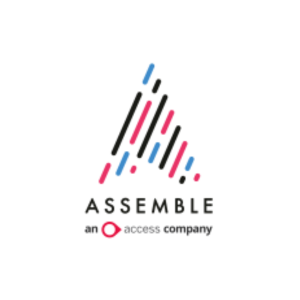Insights
INSIGHTS
All Topics
My Account
How to create a great impact report
19 May 2022by Mary Wessel
An impact report is a brilliant way to celebrate your charity’s successes, thank existing donors and engage new supporters. We show you how to get it right
A trustees’ annual report is a legal requirement for charities with an income of more than £25,000. It has to contain specific information and be completed within ten months of the end of your financial year.
But an impact report can mean different things to different people. An impact report could:
- Run alongside your annual report and financial statements to highlight the key achievements of the year (such as the parallel reports created by Great Ormond Street Hospital)
- Celebrate your organisation’s anniversary
- Showcase the achievements of a significant programme
Whatever specific reason you choose to create an impact report, it’s a great opportunity to celebrate your achievements, thank existing donors for their support, and encourage others to start supporting your organisation.
Here are our tips for creating one that will pack a punch.
-
Know who your audience is
As with any communication, your first step is to know who you’re writing for. It’s likely your audience will include funders, donors and supporters. But it will probably also be of interest to your charity’s staff, volunteers and partner organisations.
Knowing your audience will help you to shape content and tone. It will also be useful when deciding what format your report will take and exploring how to make it as accessible as possible for your audience.
-
Focus on impact
It can be relatively easy to write about the work you’ve done, describing, for example, a programme that’s just completed or new services that have launched. Communicating impact takes a little more probing.
Always ask yourself ‘so what?’. Provided free meals for older people in your community? So what? Drill down into what the benefits are. ‘Every Tuesday, we welcome 40 older people to our centre and give them a home-made, nutritious meal. The friendships made over a roast dinner combat the loneliness that many of our guests say they experience.’
The Media Trust has a helpful Guide to Measuring Impact which explains how to go about gathering your impact evidence, and we’ve written about how to use data to show your impact.
-
Using stats and data
Where possible, use stats and figures to back up any statements you make, and be specific. Rather than: ‘We helped primary school children to reconnect with nature’ try ‘We took 300 primary school children on bug hunts in the forest.’
Using infographics is a great way to make stats accessible – particularly when explaining how you spend your money. They can also help to grab attention and break up sections of copy.
-
Stories and quotes
But it’s not only stats and data that are valuable when communicating your impact. Personal stories can bring to life what you do and what’s been achieved. Hearing from beneficiaries about the impact your charity has on their day-to-day lives is a really powerful way to connect with your audience.
Using quotes from a range of voices can help to give a direct and rounded impression of your organisation. As well as the people who use your charity’s services, think about approaching other members of staff, trustees and volunteers.
-
Give yourself time
Bear in mind that it can take a while to gather this kind of impact information. Give yourself ample time to be able to coordinate with people right across the organisation. If you don’t already have systems in place to collet stories, testimonials, quotes and stats etc. consider doing so.
For smaller charities, this could be as simple as having a shared folder for colleagues to pop in any useful information as they go about their day job. That way, the next time you start to put together a report, you’ll already have ideas and supporting information to hand.
-
Writing and design
An impact report is a key document to showcase your work and strengthen your brand – so it’s worth investing in. If you don’t have the right skills in-house, consider hiring a freelancer.
Or if your budgets are really squeezed, you could try easy-to-use design software, such as Canva (free for not-for-profits) or Piktochart (which offers reduced rates for not-for-profits).
Remember that the report should be in line with your brand guidelines, as well as using plain English which is jargon-free and accessible.
-
Photos
Strong, on-brand photography can help to tell your story. Images are more memorable than the written word, and can be impactful and attention-grabbing. For example, Greenpeace, in their 2019 impact report included a ‘In pictures: 2019 highlights’ to powerfully communicate their key achievements.
If your budget stretches, it could be worth investing in a photo shoot with your beneficiaries.
More on this topic
Related Content
Recommended Products
Our Events
Charity Digital Academy
Our courses aim, in just three hours, to enhance soft skills and hard skills, boost your knowledge of finance and artificial intelligence, and supercharge your digital capabilities. Check out some of the incredible options by clicking here.
















